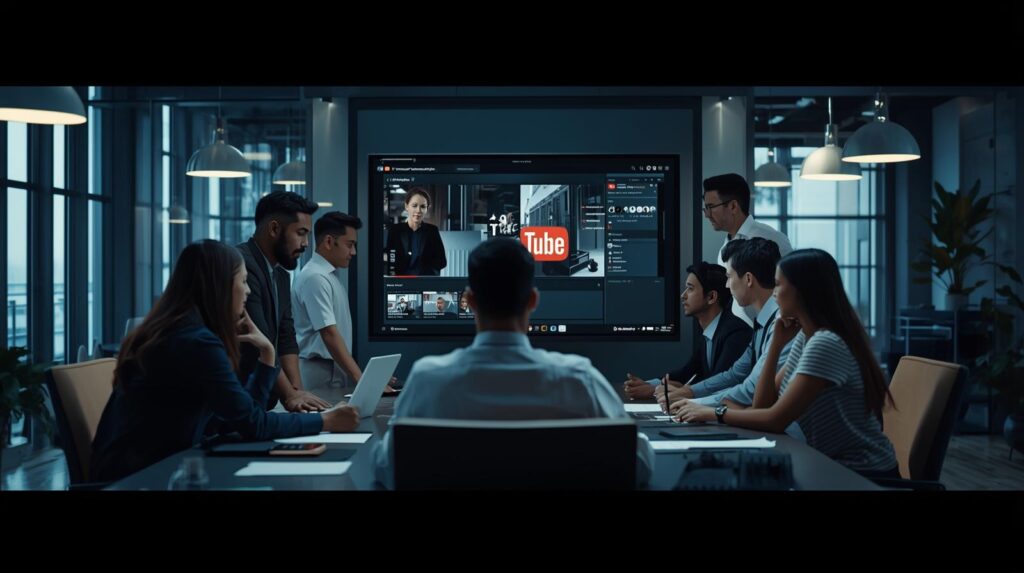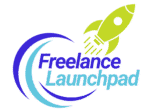Strategic Content That Builds Authority and Attracts Ideal Clients
Freelancers who succeed on social media aren’t posting random motivational quotes—they’re sharing strategic content that demonstrates expertise, builds trust, and guides prospects through a journey from awareness to inquiry. These 10 content types will help you create posts that generate real business results, not just likes
The Content Trap Most Freelancers Fall Into
Here’s a scenario I see play out repeatedly: Mark, a talented freelance web developer, posts consistently on LinkedIn. His content includes motivational Monday quotes, generic industry news shares, and the occasional “just finished a project!” update. He’s active, he’s consistent, but after six months, he’s generated exactly zero client inquiries from social media.
Meanwhile, his competitor Lisa posts half as often but focuses on strategic content: behind-the-scenes problem-solving videos, client transformation stories, and educational posts that demonstrate her expertise. Result? Lisa books two new clients in three months while Mark wonders why social media “doesn’t work” for freelancers.
The difference isn’t posting frequency or even content quality—it’s strategic intent. Every piece of content Lisa creates serves a dual purpose: providing immediate value to her audience while subtly demonstrating why she’s the obvious choice when they need a web developer.
Here’s the reality that most freelancers miss: According to recent data, 41% of organizations are testing proactive engagement strategies, and social listening is now the second-highest priority for businesses on social media. Your prospects aren’t just passively consuming content—they’re actively researching solutions to their problems. The question is: will your content be part of that research process?

The Psychology Behind Content That Converts
Why Generic Content Fails
Most freelancer content falls into what I call the “broadcast trap”—posting content that announces rather than engages, that tells rather than teaches, that promotes rather than proves value. This approach fails because it doesn’t align with how modern buyers actually research and make decisions.
The Modern Client Journey:
- Problem Recognition: “We need better website copy”
- Solution Research: “What makes good website copy?”
- Provider Evaluation: “Who demonstrates they understand our challenges?”
- Decision Making: “Which expert shows proof of results?”
Generic motivational posts don’t fit anywhere in this journey. Strategic content that demonstrates expertise, however, becomes an integral part of their research process.
The Trust-Building Framework
Every piece of freelancer content should serve one or more of these strategic purposes:
Demonstrate Expertise: Show you understand the problems your ideal clients face Provide Value: Give away genuinely useful insights that help solve smaller problems Build Trust: Share results, processes, and behind-the-scenes authenticity Guide Discovery: Help prospects self-identify whether they need your services Facilitate Connection: Create natural opportunities for prospects to reach out

Social media matters
– Gary Vaynerchuck
“Social media is about the people! Not about your business”.
10 Strategic Content Types That Build Your Freelance Business
Content Type 1: The Problem/Solution Deep-Dive
The Strategy: Take a common problem your ideal clients face and break down both the issue and your approach to solving it. This positions you as someone who deeply understands their challenges.
The Format:
- Hook: “The biggest mistake I see [target clients] making…”
- Problem explanation: Why this issue occurs and its business impact
- Solution overview: Your methodology for addressing it
- Proof point: Brief example or result from your experience
- Engagement question: Ask readers about their experience with this issue
Example for a Freelance Content Marketer:
“The biggest mistake I see SaaS companies making with their blog content: writing for search engines instead of humans.
Here’s what happens: They keyword-stuff articles that rank well but don’t convert. Traffic goes up, but trial signups stay flat.
My approach: Start with customer conversations. I interview 5-10 existing customers to understand their language, pain points, and decision triggers. Then I optimize for search using their actual words.
Result for a recent client: 40% increase in trial signups from blog traffic, same search volume.
What’s your biggest content challenge right now?”
Why This Works:
- Demonstrates industry knowledge and common problems
- Shows your methodology without giving away everything
- Includes a specific result that proves competence
- Creates an opportunity for prospects to share their challenges
- Positions you as someone who understands the real business impact
Optimal Posting Frequency: 2-3 times per month Best Platforms: LinkedIn (for B2B), Facebook (for local services) Success Metrics: Comments from ideal client profiles, DMs asking for details
Content Type 2: The Behind-the-Scenes Process
The Strategy: Show your actual work process in action. This builds trust by demonstrating competence and giving prospects confidence in your methodology.
The Format:
- Setup: Briefly describe the client challenge (without revealing identity)
- Process documentation: Show 3-5 key steps in your workflow
- Insights shared: What you learned or discovered during the process
- Results teaser: Hint at the outcome without full details
- Value add: Include a tip readers can implement immediately
Example for a Freelance Graphic Designer:
“Day 3 of rebranding a local restaurant. Here’s what discovery uncovered:
Their customers aren’t who they thought (45+ professionals, not 25-35 creatives) .Current branding appeals to the wrong demographic entirely, 85% of orders come through mobile—current menu is unreadable on phones. Competitors all use red/black—opportunity to own a different colour space
The breakthrough: Instead of ‘trendy gastropub,’ we’re positioning as ‘neighbourhood gathering place for accomplished professionals.’
One tip: Before any rebrand, survey actual customers. Assumptions kill good design.
What’s the biggest disconnect you’ve seen between brand and audience?”
Why This Works:
- Demonstrates your strategic thinking process
- Shows you do research rather than just create pretty designs
- Provides a genuinely useful tip for small business owners
- Creates intrigue about your methodology and results
- Positions you as someone who solves business problems, not just design problems
Optimal Posting Frequency: 1-2 times per month Best Platforms: Instagram Stories (process videos), LinkedIn (case study format) Success Metrics: Saves, shares, profile visits, consultation requests

Content Type 3: The Client Transformation Story
The Strategy: Share before/after results from client work, focusing on business impact rather than just deliverables. This provides social proof while demonstrating your ability to drive results.
The Format:
- Client background: Industry and situation (without identifying details)
- Challenge faced: Specific problem they needed solved
- Your approach: High-level methodology without giving away secrets
- Specific results: Quantifiable improvements achieved
- Lesson learned: Insight that readers can apply to their situation
Example for a Freelance Social Media Manager:
“6 months ago: Local fitness studio with 847 Instagram followers, posting sporadically, averaging 12 likes per post.
Challenge: Owner spent 2+ hours daily on social media with minimal results. Needed consistent growth to compete with big-box gyms.
Our strategy: ✅ Shifted from ‘gym content’ to ‘community transformation stories’ ✅ Created member spotlight series ✅ Added local SEO hashtags ✅ Implemented engagement pods with other local businesses
Results after 6 months: 2,847 followers (237% growth), Average 89 likes per post, 34 new members directly from Instagram. Owner now spends 20 minutes/week on social
Key insight: People join gyms to transform. Show the transformation, not the equipment.
What transformation does your business help create?”
Why This Works:
- Provides concrete proof of your ability to deliver results
- Shows you understand business metrics, not just vanity metrics
- Demonstrates your strategic thinking and problem-solving approach
- Includes specific numbers that prospects can relate to their situation
- Positions you as someone who creates business value, not just content
Optimal Posting Frequency: 1-2 times per month Best Platforms: LinkedIn (B2B focus), Facebook (local services) Success Metrics: Comments asking about your process, connection requests, direct inquiries
Content Type 4: The Industry Insight and Prediction
The Strategy: Share your perspective on industry trends, changes, or predictions. This positions you as a thought leader who stays ahead of industry developments.
The Format:
- Trend observation: What you’re seeing change in your industry
- Why it matters: Business implications for your ideal clients
- Your prediction: Where you think things are heading
- Action recommendation: What businesses should do now to prepare
- Discussion starter: Ask for others’ perspectives
Example for a Freelance SEO Consultant:
“Prediction: By end of 2025, 60% of small businesses will need to completely rebuild their local SEO strategy.
Why? Google’s SGE (Search Generative Experience) is changing how people find local services. Instead of clicking through to 10 different websites, they’re getting answers directly in search results.
What this means for local businesses: Being ‘listed’ won’t be enough—you need to be THE answer. Google Business Profile optimization becomes 10x more critical. Review strategy needs to focus on specific, detailed feedback. FAQ content becomes your most valuable SEO asset
My advice: Start optimizing for ‘answer intent’ now. Create content that directly answers the questions your customers ask Google.
Example: Instead of ‘About Our Plumbing Services,’ write ‘How Much Does Emergency Plumbing Cost in [Your City]?’
Are you seeing these changes affect your business yet?”
Why This Works:
- Demonstrates you’re staying current with industry developments
- Shows strategic thinking about business implications
- Provides actionable advice readers can implement immediately
- Positions you as someone who can help businesses adapt to changes
- Creates opportunities for prospects to ask follow-up questions
Optimal Posting Frequency: 1-2 times per month Best Platforms: LinkedIn (professional insights), Twitter/X (real-time commentary) Success Metrics: Shares by industry leaders, mentions in industry discussions, consultation requests
Content Type 5: The “Mistake Monday” Educational Series
The Strategy: Regularly share common mistakes you see in your field, positioning yourself as someone who can help others avoid costly errors.
The Format:
- Mistake identification: Common error you frequently encounter
- Why it happens: Root causes or misconceptions that lead to this mistake
- Business impact: What this mistake actually costs businesses
- Correct approach: How to do it right
- Prevention tip: How to avoid this mistake in the future
Example for a Freelance Email Marketing Specialist:
“Mistake Monday: Using ‘no-reply@’ email addresses
I see this constantly: businesses spend thousands on email marketing, then use ‘no-reply@company.com’ as their sender address.
Why it happens: Teams think it’ll reduce inbox clutter and support tickets.
What it actually costs: 25-30% lower open rates, Higher spam folder placement, Missed opportunities for valuable customer feedback, Frustrated customers with nowhere to respond
The right approach: Use a real person’s email (like sarah@company.com) with auto-responders for common inquiries.
Pro tip: Set up a dedicated email like ‘hello@company.com’ that forwards to your support team. You get the deliverability benefits plus organized customer communication.
Have you been making this mistake? (Be honest—no judgment!)”
Why This Works:
- Provides immediate, actionable value to readers
- Positions you as an expert who spots problems others miss
- Creates a recognizable content series that builds anticipation
- Shows you understand the business impact of technical decisions
- Gives prospects a reason to audit their own practices
Optimal Posting Frequency: Weekly (hence “Mistake Monday”) Best Platforms: LinkedIn (professional advice), Instagram (visual mistake examples) Success Metrics: Regular engagement from the same followers, requests for audits or consultations
“Social media is about the people! Not about your business. Provide for the people, and the people will provide for you”
Matt Goulart



Content Type 6: The Tool or Resource Recommendation
The Strategy: Share genuinely useful tools, resources, or strategies that help your ideal clients, building trust through value-first content.
The Format:
- Problem context: Situation where this tool/resource is valuable
- Tool introduction: What it is and why you recommend it
- Specific benefits: How it solves the problem better than alternatives
- Implementation tip: Your insider knowledge for using it effectively
- Call to action: Encourage others to try it and share their experience
Example for a Freelance Content Writer:
“Free tool that’s saved me 5+ hours per week: AnswerThePublic
The problem: Client wants ‘viral blog content’ but has no idea what their audience actually searches for.
The solution: AnswerThePublic shows you every question people ask Google about your topic.
Why I love it: Reveals real customer language (not corporate jargon), Shows exactly what people want to know, Headlines practically write themselves, Free version gives you enough data for most projects
My secret trick: Use it to create FAQ sections that actually answer customer questions. I’ve seen this single change increase blog conversion rates by 40%.
Try it with one of your main keywords. I guarantee you’ll discover questions you never thought to address.
What’s your go-to research tool?”
Why This Works:
- Provides immediate, tangible value to readers
- Demonstrates your resourcefulness and efficiency
- Shows you think strategically about content creation
- Includes a specific, actionable tip they can implement today
- Positions you as someone who stays current with useful tools
Optimal Posting Frequency: 2-3 times per month Best Platforms: LinkedIn (professional tools), Twitter/X (quick tips) Success Metrics: Clicks to the tool, comments about results, connections from users
Content Type 7: The “Day in the Life” Authenticity Post
The Strategy: Share realistic glimpses into your freelance life, building personal connection while subtly demonstrating your professionalism and work ethic.
The Format:
- Time-based structure: Walk through part of your actual day
- Work insights: Show your thought process or problem-solving
- Personal touch: Include human elements without oversharing
- Professional insight: Share a lesson or observation from your day
- Relatability factor: Acknowledge common freelancer experiences
Example for a Freelance Web Developer:
“Tuesday reality check: 7:42 AM
☕ Coffee #1: Checking overnight error logs for client’s e-commerce site, Found the issue: payment gateway timeout (30 seconds). The fix: 5 minutes. Finding it: 45 minutes. The lesson: Always set up proper monitoring. Always.
9:30 AM: Client call about ‘simple’ feature addition Client: ‘Can users just click to add products to favorites?’ Reality: Database changes, user auth, session management, mobile responsiveness, email notifications… My response: ‘Absolutely. Here’s what’s involved…’
The freelancer superpower: translating ‘simple’ requests into accurate scope and timelines.
1:15 PM: Finally eating lunch while debugging CSS that works everywhere except Safari Safari: Making developers question their life choices since 2003
What’s the most ‘simple’ request that turned into a day-long project for you?”
Why This Works:
- Shows your expertise through real problem-solving examples
- Demonstrates professionalism in handling client communications
- Creates relatability with both freelancers and potential clients
- Provides insight into your thought process and work quality
- Uses humor to make technical content engaging
Optimal Posting Frequency: 1-2 times per month Best Platforms: Instagram Stories (casual format), LinkedIn (professional insights) Success Metrics: High engagement from both peers and prospects, personal connection comments
Content Type 8: The Client Education Series
The Strategy: Create content that helps your ideal clients become better buyers of your services, demonstrating expertise while building trust.
The Format:
- Buyer education focus: Help clients understand your industry/process
- Common misconceptions: Address myths or unrealistic expectations
- What good looks like: Help them recognize quality work
- Red flags to avoid: Warning signs of poor providers
- Smart questions to ask: Help them evaluate potential freelancers
Example for a Freelance Brand Strategist:
“How to spot a brand strategist who actually knows what they’re doing:
Red flags (run away): 🚩 Promises to ‘create your brand’ in under a week. Shows you logos before asking about your business goals. Can’t explain the difference between brand and marketing. Portfolio only shows visual identity, no strategy work
Green flags (you’re in good hands): ✅ Asks about your business model before discussing design. Wants to interview your existing customers. Shows examples of positioning statements, not just logos. Discusses measurable outcomes of their brand work. Has a clear process they can walk you through
Smart questions to ask: ‘How do you measure brand strategy success?’ ‘Can you show me a brand positioning statement you’ve created?’ ‘What’s your process for understanding our target audience?’
The goal isn’t finding the cheapest option—it’s finding someone who can actually move your business forward.
What questions would you add to this list?”
Why This Works:
- Positions you as confident in your abilities (you’re helping them evaluate you)
- Demonstrates deep understanding of quality standards in your field
- Shows you care about client success, not just getting hired
- Educates prospects about what they should expect from good providers
- Creates trust by helping them make better decisions
Optimal Posting Frequency: 1-2 times per month Best Platforms: LinkedIn (professional guidance), blog posts shared on social Success Metrics: Shares by potential clients, consultation requests, referrals from other professionals

Content Type 9: The Collaborative Industry Conversation
The Strategy: Start meaningful discussions about industry challenges or changes, positioning yourself as a thought leader who brings people together.
The Format:
- Industry observation: Something you’ve noticed or are curious about
- Multiple perspectives: Acknowledge different viewpoints
- Your experience: Share your take without being dogmatic
- Community question: Ask for others’ experiences and insights
- Engagement commitment: Respond thoughtfully to comments
Example for a Freelance Digital Marketing Consultant:
“Controversial opinion: The ‘always be testing’ mentality is hurting small businesses.
Here’s what I’m seeing: SMBs spending weeks A/B testing email subject lines that might improve open rates by 2%, while their website hasn’t been updated in 3 years.
The testing obsession creates analysis paralysis. Perfect becomes the enemy of good.
My take: For businesses under $1M revenue, focus on the 80/20 wins: Send emails consistently – Make your website mobile-friendly. Get your Google Business Profile right. Actually respond to customer reviews
Test the big stuff later.
BUT I might be wrong. Other marketers: What’s your experience? Are small businesses over-testing? Under-testing? How do you help them prioritize?
Business owners: Do you feel pressure to constantly test everything?”
Why This Works:
- Shows you think strategically about business priorities
- Demonstrates confidence in your opinions while remaining open to discussion
- Creates a conversation that multiple types of people want to join
- Positions you as someone who understands small business realities
- Generates engagement from both peers and potential clients
Optimal Posting Frequency: 2-3 times per month Best Platforms: LinkedIn (professional discussions), Twitter/X (real-time conversations) Success Metrics: Comments from industry peers, shares, mentions in others’ content
Content Type 10: The Results-Driven Case Study Snippet
The Strategy: Share specific, compelling results from your work in a way that demonstrates value while respecting client confidentiality.
The Format:
- Context setup: Industry and situation without identifying the client
- Challenge statement: Clear problem that needed solving
- Your approach: High-level strategy you implemented
- Specific metrics: Concrete, impressive results achieved
- Key insight: The critical factor that made the difference
- Broader application: How others might apply this insight
Example for a Freelance Conversion Rate Optimizer:
“Sometimes the smallest changes create the biggest results:
Client: SaaS company with 47,000 monthly trial signups but only 3.2% conversion to paid
The challenge: Users activated the trial but abandoned during setup
The insight: Exit interviews revealed setup felt ‘overwhelming’ even though it was only 4 steps
The change: Added progress indicators and time estimates Step 1: Basic info (2 minutes) Step 2: Import data (30 seconds) Step 3: Set preferences (1 minute) Step 4: Invite team (optional)
Results: Setup completion: 68% → 89%, Trial-to-paid conversion: 3.2% → 7.1%. Additional monthly revenue: $240,000
The lesson: Users don’t fear complexity—they fear uncertainty. Show them what to expect.
Total project time: 6 hours Total design changes: Progress bar + 4 text labels
What’s one small change that created big results for you?”
Why This Works:
- Provides concrete proof of your ability to drive significant results
- Shows you understand the business impact of small changes
- Demonstrates efficiency (big results, small time investment)
- Includes a transferable insight others can apply
- Creates intrigue about your methodology and expertise
Optimal Posting Frequency: 1-2 times per month Best Platforms: LinkedIn (B2B results), Twitter/X (quick case studies) Success Metrics: Comments asking about methodology, connection requests, direct inquiries about services

The Strategic Content Calendar Framework
The Weekly Rhythm That Works
Monday: Industry insight or prediction (thought leadership) Wednesday: Educational content (mistake Monday, client education) Friday: Behind-the-scenes or personal story (authenticity building)
The Monthly Mix for Maximum Impact
Week 1: Problem/solution deep-dive + Tool recommendation Week 2: Behind-the-scenes process + Industry conversation Week 3: Client transformation story + Educational series Week 4: Day-in-the-life + Case study snippet
Platform-Specific Adaptations
LinkedIn (B2B Focus):
- Longer-form content with professional insights
- Industry predictions and strategic thinking
- Client transformation stories with business metrics
- Educational content that helps buyers make better decisions
Instagram (Visual Storytelling):
- Behind-the-scenes process videos
- Before/after visual transformations
- Day-in-the-life Stories with professional insights
- Tool recommendations with visual demonstrations
Twitter/X (Real-Time Engagement):
- Quick insights and industry observations
- Thread-based case studies and educational content
- Live commentary on industry events or trends
- Tool recommendations with immediate implementation tips
Measuring Success: Metrics That Matter for Business Growth
Primary Business Indicators
Direct Inquiries: Comments or DMs asking about your services Consultation Requests: People booking discovery calls or meetings Referral Opportunities: Others mentioning you in their content or to colleagues Speaking Invitations: Requests to present or participate in industry events
Engagement Quality Metrics
Ideal Client Engagement: Comments and shares from your target market Peer Recognition: Engagement from other professionals in your field Content Saves: People saving your content for future reference Profile Visits: Increased traffic to your professional profiles
Long-Term Authority Building
Thought Leadership Recognition: Being quoted or referenced by others Industry Participation: Invitations to join discussions, panels, or collaborations Content Amplification: Others sharing your insights with their networks Client Testimonials: Clients mentioning your content helped them find you
Common Content Mistakes That Kill Business Results
The Expertise Hiding Trap
Many freelancers create “accessible” content that’s so basic it doesn’t demonstrate their actual expertise level. Your content should show the depth of your knowledge while remaining valuable to your audience.
Instead of: “5 Tips for Better Website Copy” Try: “The Psychology Behind Convert-Optimized Headlines: What 50+ A/B Tests Taught Me”
The Generic Value Trap
Sharing the same tips everyone else shares makes you invisible. Your content should include insights that can only come from your specific experience and expertise.
Instead of: “Use A/B testing to improve your emails” Try: “Why A/B testing subject lines killed our email performance (and what we did instead)”
The Promotion-Heavy Trap
Content that feels promotional gets ignored. Focus on providing value first, with subtle credibility building woven throughout.
Instead of: “We just launched our new web design service!” Try: “The psychology behind website decisions: What 200+ user interviews taught me about conversion optimization”
Your Content Implementation Action Plan
Week 1: Foundation Setup
- Choose your primary platform based on where your ideal clients spend time
- Identify your content pillars using the 10 types above
- Create your first month’s content calendar using the weekly rhythm framework
- Set up tracking systems for engagement quality and business inquiries
Week 2: Content Creation Sprint
- Create 4 pieces of content using different types from this guide
- Schedule content consistently using your chosen platform’s native tools or Buffer/Hootsuite
- Engage authentically with your target audience’s existing content
- Document initial engagement patterns to understand what resonates
Week 3: Optimization and Refinement
- Analyze which content generates the most meaningful engagement
- Adjust your content mix based on what’s working best for your audience
- Identify engagement opportunities with ideal clients who comment on others’ content
- Plan content upgrades for your highest-performing posts
Week 4: Scale and Systematize
- Create content templates for your best-performing content types
- Build a content idea repository using the frameworks in this guide
- Establish engagement routines for consistent community building
- Set monthly review dates to assess business impact and adjust strategy
The Long-Term Content Strategy
Remember, strategic content creation is a marathon, not a sprint. The freelancers who succeed with content marketing are those who understand that every post is an investment in their future business.
Month 1-2: Focus on consistency and finding your voice Month 3-4: Refine based on engagement patterns and audience feedback Month 5-6: Double down on what’s working and begin seeing business results Month 7+: Expand successful content themes and explore new platforms strategically
Your content should serve your business goals while genuinely helping your audience. When you achieve this balance, social media transforms from a time-consuming obligation into a powerful business development tool that works while you sleep.
The most successful freelancers understand that content marketing isn’t about going viral—it’s about being valuable, consistently, to the specific people who need your services.
Ready to transform your social media from random posting to strategic business development? Start with one content type from this guide, commit to posting it consistently for 30 days, and watch how strategic content transforms both your authority and your client pipeline.
Your First Steps to Freelance Freedom
